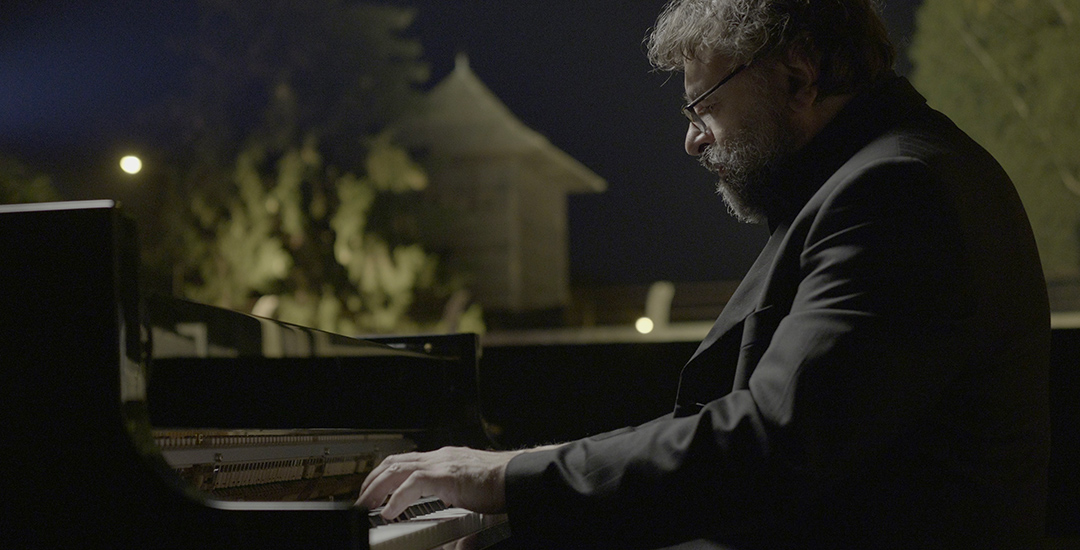
Here you will find commented excerpts from the documentary, "The Last Musician of Auschwitz," for classroom use.
In this excerpt, students will see a modern-day ensemble play Eine Kleine Nachtmusik at the Auschwitz concentration camp memorial site and watch interviews with Holocaust survivors.
To work with this clip, please use Lesson Plan 1: Music in Auschwitz.
This excerpt shows people talking about their arrival at the Auschwitz concentration camp.
To work with this clip, please use Lesson Plan 2: Arriving in Auschwitz.
This excerpt shows a modern-day performance of Die Träumerei (Dreams) by Raphael Wallfisch on the cello. It is the same piece of music that his mother, Anita Lasker-Wallfisch, was forced to play in the Auschwitz concentration camp.
To work with this clip, please use Lesson Plan 3: The Cellist.
In this excerpt, students will hear Anita Lasker-Wallfisch talk about being a cellist. As of 2025, Lasker-Wallfisch is the last living member of the Auschwitz Women’s Orchestra.
To work with this clip, please use Lesson Plan 3: The Cellist.
This excerpt shows a modern-day performance of the German song, Und der Regen rinnt (And the Rain Runs), written by Ilse Weber. Weber was a Jewish writer from Czechoslovakia and wrote the song about missing her son whom she had sent away to save.
To work with this clip, please use Lesson Plan 4: A Mother’s Love.
This excerpt shows a modern-day performance of the German song, Wiegala (Beddy-Bye), written by Ilse Weber. Weber was a Jewish writer from Czechoslovakia and is said to have sung the song to a group of children while she and they were being killed in a gas chamber by the Nazis.
To work with this clip, please use Lesson Plan 4: A Mother’s Love.
In this excerpt, students will learn about the history of the Romani people and the Nazi persecution of them.
To work with this clip, please use Lesson Plan 5: Romani Music in Auschwitz.
Aušvicate hi kher baro – commented version
In this excerpt, students will watch a modern-day performance of the Romani song Aušvicate hi kher baro (There is a Big Building in Auschwitz) by Petra Gelbart. This version includes an introduction by Gelbart explaining some of the background of the song before singing it, as well as some additional thoughts after her performance of the song.
To work with this clip, please use Lesson Plan 5: Romani Music in Auschwitz.
Aušvicate hi kher baro – performance only
In this excerpt, students will watch a performance of the Romani song Aušvicate hi kher baro (There is a Big Building in Auschwitz) by Petra Gelbart. This version shows the performance only.
To work with this clip, please use Lesson Plan 5: Romani Music in Auschwitz.
The Jewish Deathsong – with historical footage
This excerpt shows a performance of the Jewish Deathsong, a song in Yiddish that talks about the fate of ten brothers killed in gas chambers. This version of the clip includes historical footage that might be disturbing for some students.
To work with this clip, please use Lesson Plan 6: The Jewish Deathsong.
The Jewish Deathsong – performance only
This excerpt shows a performance of the Jewish Deathsong, a song in Yiddish that talks about the fate of ten brothers killed in gas chambers. This version of the clip only shows the performance of the song.
To work with this clip, please use Lesson Plan 6: The Jewish Deathsong.
Starting in October 2025, you will be able to stream the full-length documentary, The Last Musician of Auschwitz, for free via BBC Select to prepare your classes.